Tara Chevrestt's Blog, page 9
February 3, 2017
Stolen Beauty: Blog Tour Review and Giveaway
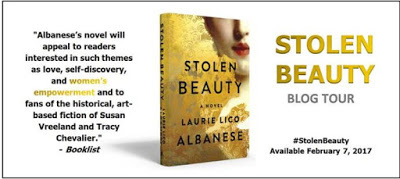
I'm interested in art history, and there was a Klimt shaped hole in my art education. The only thing I knew about Austrian artist Gustav Klimt was that he painted The Woman in Gold. Stolen Beauty by Laurie Lico Albanese takes the perspective of two real women. One is Adele Bloch-Bauer, a prominent art patron. The Woman in Gold is a portrait of her, but she also had an ongoing relationship with Klimt. The other perspective is that of her niece, Maria Altmann, who eventually sued Austria to regain her family's ownership of The Woman in Gold. There are a number of non-fiction accounts of this well-known case, but I love the immediacy of skilfully written historical fiction. So I joined the Stolen Beauty blog tour and received an ARC from the publisher via Net Galley.
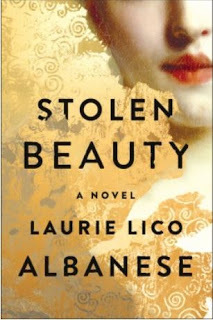
Although I learned a great deal about Klimt from this book, I am going to focus on the women for Flying High Reviews. I was more interested in Adele's narrative than Maria's. Both were courageous women, but Adele was more complex.
I noted that Adele gave up on becoming an artist as a child because she wasn't being taught to draw human beings. She didn't realize it, but this issue had held back woman artists for centuries. Women weren't allowed to learn human anatomy because it would empower them sexually as well as artistically. Society was invested in keeping women ignorant of men's bodies as well as their own.
I was also interested in the fact that Adele chose to marry a man who promised her freedom. That was her priority in the selection of a husband--not love, attractiveness or wealth. He certainly had wealth, but her own family was wealthy. She was accustomed to always having whatever she needed, yet her strict mother made her feel very constrained. She couldn't go where she pleased or follow her interests. So she married for independence, and for the most part she got it. She met artists, musicians, writers and intellectuals. She founded her own salon to discuss the issues of the day. She also founded an art museum and selected its collection. The Woman in Gold made her prominent and admired.
Adele tried to instill the importance of independence in her niece, Maria. Maria grew to adulthood in a world that was very different from Adele's. Adele's influence turned out to be a significant source of strength that allowed Maria to survive WWII.
Adele's family was Jewish, but religion was largely irrelevant to her. She grew up in a completely secular home. Adele encountered anti-semitism, but it never impacted her life very much. Maria, on the other hand, lived to see the rise of Nazi Germany and the invasion of Austria. Her uncle's collection of Klimts disappeared when the Nazis looted the art of Jewish families.
This brings me to Maria's litigation with Austria. I admit that I originally wasn't sympathetic to Maria's point of view, and I found the case that her lawyer made troubling from a feminist perspective. Yet I eventually came around to the argument that Austria shouldn't benefit from Nazi theft.
I was glad to learn about the woman behind the famous Klimt portrait. It was also important for me to find out more about the Jews of Austria during WWII. I found Stolen Beauty an enlightening and provocative historical novel.
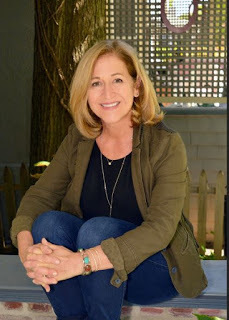 Laura Lico Albanese
Laura Lico AlbanesePhoto credit: Martha Hines Kolko
Blog Tour Wide Giveaway
Win a signed copy of STOLEN BEAUTY by Laurie Lico Albanese (3 total prizes)! The contest is open until February 14th.
a Rafflecopter giveaway
Published on February 03, 2017 00:00
January 12, 2017
Women Exhibit All Kinds of Remarkable Bravery in The Alice Network @KateQuinnAuthor
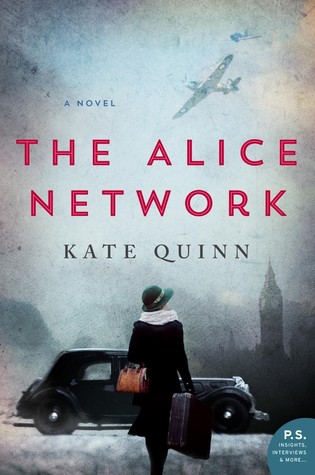 Amazing. Just when I thought I'd read every type of WWII story out there..and I think I can no longer be surprised, I am. This novel is riveting, thrilling, suspenseful, heartwarming, and funny! I fell in love with the characters, felt what they were feeling, cheered and cried with them.
Amazing. Just when I thought I'd read every type of WWII story out there..and I think I can no longer be surprised, I am. This novel is riveting, thrilling, suspenseful, heartwarming, and funny! I fell in love with the characters, felt what they were feeling, cheered and cried with them.There's a 1947 heroine who is struggling with death. She has lost her brother and her family, rather than banding together, seems to drift further apart and Charlie gets herself into a bit of trouble... At first she comes across as a tad spineless but as the novel unfolds, going back and forth between Charlie in 47 and Eve in 1915...we see two women grow backbones and experience life. There are different levels of bravery in this novel, each one just as important as the last.
Bravery isn't just spying in enemy territory. It's also facing demons from your past, loving after you've been hurt, standing up to those who wish to control you, laughing in the face of evil, finding joy in a time of war. We learn from Lili as well as Eve and Charlie.
Terrific novel. I enjoyed traveling the French countryside with these women as well as experiencing their harrowing adventures. I think this book is a wonderful way to honor the women spies of both wars.
I won an ARC of this on Facebook.
Published on January 12, 2017 16:57
January 11, 2017
Ghost Talkers: A Novel Depicting A Secret Paranormal Aspect of WWI
My reviews on this blog dealing with Madame Presidentess about Victoria Woodhull and The Witch of Napoli here , show my interest in spiritualist mediums. This is why I wanted to read and review Ghost Talkers by Mary Robinette Kowal. The premise is that during WWI the British secretly utilized mediums to pass on information from recently dead soldiers to military authorities. This is an extraordinary concept. So I thought it would make for a highly unusual novel.
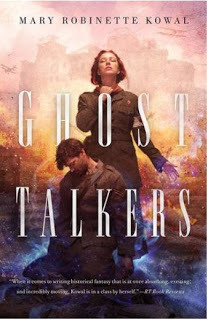
Ghost Talkers reflects the world wide predominance of women among spirit mediums. This doesn't mean that it's impossible for men to be mediums. There actually are male mediums shown in this novel, but mediums are usually women. The reasons are largely based on cultural traditions and gender stereotypes. Mediums must be receptive to spirits. That ability to be receptive is a strength in the context of mediumship, not a weakness. Gifted men must overcome the idea that receptivity is unmasculine in order to accept that they are mediums.
Kowal presents mediumship as a way for women to play an important role in the war. It was not the only role that women played in WWI. We know that women were nurses, ambulance drivers and espionage agents. There were also woman pilots in WWI. See Inspirational Women of World War I. Ghost Talkers does include nurses, and Kowal prominently mentions ambulance drivers in her historical note.
The women in the British medium corps are presented as strong individuals. It's mentioned that some were Afro-Caribbean immigrants. One Afro-Caribbean medium was a named minor character. Yet the main protagonist was Ginger Stuyvesant, an American whose mother was English. I ended up respecting Ginger for her courage. Her romance with British Captain Ben Hadford is very central to the plot, and her last scene with him was very moving.
I give this book an A for originality. It may be a candidate for my favorite read of 2017, but it's much too early in the year to know that for certain. It would be wonderful if Mary Robinette Kowal wrote further about the women of the medium corps.

Ghost Talkers reflects the world wide predominance of women among spirit mediums. This doesn't mean that it's impossible for men to be mediums. There actually are male mediums shown in this novel, but mediums are usually women. The reasons are largely based on cultural traditions and gender stereotypes. Mediums must be receptive to spirits. That ability to be receptive is a strength in the context of mediumship, not a weakness. Gifted men must overcome the idea that receptivity is unmasculine in order to accept that they are mediums.
Kowal presents mediumship as a way for women to play an important role in the war. It was not the only role that women played in WWI. We know that women were nurses, ambulance drivers and espionage agents. There were also woman pilots in WWI. See Inspirational Women of World War I. Ghost Talkers does include nurses, and Kowal prominently mentions ambulance drivers in her historical note.
The women in the British medium corps are presented as strong individuals. It's mentioned that some were Afro-Caribbean immigrants. One Afro-Caribbean medium was a named minor character. Yet the main protagonist was Ginger Stuyvesant, an American whose mother was English. I ended up respecting Ginger for her courage. Her romance with British Captain Ben Hadford is very central to the plot, and her last scene with him was very moving.
I give this book an A for originality. It may be a candidate for my favorite read of 2017, but it's much too early in the year to know that for certain. It would be wonderful if Mary Robinette Kowal wrote further about the women of the medium corps.
Published on January 11, 2017 22:46
January 7, 2017
The Orphan's Tale: A Novel About the Sisterhood We Choose
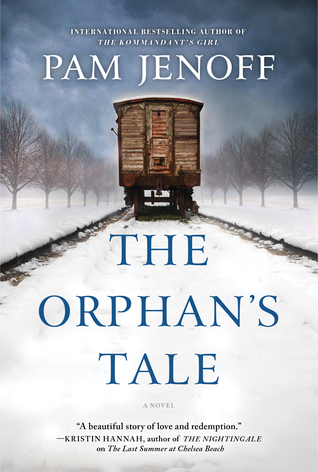 I didn't know what to expect when I picked up this novel. "The Nightingale meets Water for Elephants in this powerful novel of friendship and sacrifice, set in a traveling circus during World War II, by international bestselling author Pam Jenoff." First of all, I thought The Nightingale was just okay and I didn't like WfE at all, but except for one novel about two sisters, Pam Jenoff's novels have been winners for me. And that is somewhat funny. In The Winter Guest, Jenoff wrote of two biological sisters who didn't get along well. In this novel, we meet two women who are not sisters, who only know each other not even a year, yet are willing to sacrifice everything for each other. It's the sisterhood of choice...
I didn't know what to expect when I picked up this novel. "The Nightingale meets Water for Elephants in this powerful novel of friendship and sacrifice, set in a traveling circus during World War II, by international bestselling author Pam Jenoff." First of all, I thought The Nightingale was just okay and I didn't like WfE at all, but except for one novel about two sisters, Pam Jenoff's novels have been winners for me. And that is somewhat funny. In The Winter Guest, Jenoff wrote of two biological sisters who didn't get along well. In this novel, we meet two women who are not sisters, who only know each other not even a year, yet are willing to sacrifice everything for each other. It's the sisterhood of choice...And it was thoroughly engrossing. I loved it. I loved meeting two strong-minded women determined to fight the Nazis in what little ways they can. Astrid, a Jew, chooses to hide in plain sight, on the trapeze! Right in front of their faces.. That's sticking it to them! Noa fights back in a not-so-in-your-face-way by rescuing a Jewish baby. In a time of war and terror, each woman finds love and lets their formerly-hurt selves love again.
The circus was interesting too. It didn't go crazy with details. I didn't learn about elephants and tigers, or even about the freak show, but I did learn about flying acrobats, the traveling town to town, the way they pitched the big top. (I'd love to see that)
I enjoyed the friendship and bond the girls developed. Even though distrust reared its ugly head at times, they bonded and looked out for each other and the rest of the circus.
What I didn't like was the sudden romance with Luc. It came abruptly and too fast to be believable. I also didn't like that in the last quarter, it's like both girls lose their blooming minds. Noa loses her marbles over Luc and Astrid loses it over Peter. Astrid and Peter, I could understand, but screaming that you're a Jew and letting yourself be kicked where it matters...really? What the heck is wrong with you? All of a sudden, two intelligent girls both lost their minds.
But the fact I got mad enough at them to scream and nearly throw the book shows how deeply I cared and that's the sign of good, engaging writing.
If you're tired of the traditional WWII tales...do check this one out.
I got this via Amazon Vine.

Published on January 07, 2017 19:58
January 3, 2017
Margaret Sanger: Champion of Women in Terrible Virtue by Ellen Feldman
 "A woman's duty: To look the whole world in the face with a go-to-hell look in her eyes, to have an ideal, to speak and act in defiance of convention."
"A woman's duty: To look the whole world in the face with a go-to-hell look in her eyes, to have an ideal, to speak and act in defiance of convention."And that is what Margaret Sanger did. She looked everyone in the face with a go-to-hell look in her eyes, and she spoken and acted in defiance of convention. Having watched her mother die older before her time, having raised 13 children, lost about 5, Margaret both loved and hated her mother. She loved her mother yet was disgusted with what her mother was, with what she let herself be: a broodmare...a baby incubator.
This novel is told in the first person, as though Margaret is looking back on her years and her life, her goals, trials, losses, loves. Personally, I loved it. First-person writing can make or break a book. In this case, it worked. The writing was engrossing; the memories were vivid. I never felt as though they were being narrated to me, but that I was living them myself.
I went with her from being called a devil's child and falling over her feet in the woods to her first marriage and the birth of her three children and the battles she fought inside herself between what she should want (what society told her she should want...a loving husband, a nice house, three adorable children) and what she really wanted (free love with whomever she pleased, a basic place in the middle of artists and socialists, and her main child: the birth control movement.
She takes on lovers and never hides who she is. She neglects her children for her one great passion. In her mind, it's better to deprive three than to let thousands of women and unwanted children everywhere suffer. And yet, she suffers herself later.
And was she a Nazi? No. We find later in the novel how that accusation came to pass and that it was a misunderstanding, a twisting of events, a misinterpretation.
I learned so much about this woman, this champion of all women. The only thing I didn't like about the novel was how vague it was about early contraception. Up until 65%, Margaret kept preaching the importance of family limitation yet didn't really offer a solution for it. This came later, after her Europe travels...but in the meantime, like all the women writing her desperate letters, I kept wondering, "What exactly are you wanting the women to do?? French letters are not affordable."
But eventually she got there, with her little possets, or womb veils. And she went to jail, albeit briefly, for her beliefs...and her sister was never the same, as she went to jail too and had a hunger strike.
But she got there...and as a result, ladies, we got there. Us modern women have the means as well the right to choose.
We can thank Margaret for that. I highly recommend reading this novel.
I purchased it via Amazon.

Published on January 03, 2017 19:07
December 31, 2016
Sometimes You Must Be Broken to Realize You're Lucky: Lucky Broken Girl by @ruthbehar
 A very engrossing, thought-evoking read. Ruthie comes from Cuba (It's the 1960s). Her family has been chasing the dream of freedom for generations, starting with her grandparents, who fled Poland and Jewish persecution, only to have to flee Castro's reign. This little girl faces a troubling time. While most girls her age are going through puberty and deciding what to wear, Ruthie gets some hard life lessons from her bed, where she lies in a full-body cast for a year.
A very engrossing, thought-evoking read. Ruthie comes from Cuba (It's the 1960s). Her family has been chasing the dream of freedom for generations, starting with her grandparents, who fled Poland and Jewish persecution, only to have to flee Castro's reign. This little girl faces a troubling time. While most girls her age are going through puberty and deciding what to wear, Ruthie gets some hard life lessons from her bed, where she lies in a full-body cast for a year.She learns what being smart is, sees the sacrifices her mother makes, develops patience, acceptance, and most of all, learns how to overcome fear...or well, better said, how to master it, as the fear doesn't really go away. You just push it aside and do.
As Ruthie says at one point in the story...you don't realize how many wonderful people you're surrounded by until something bad happens.
There is so much to learn and take away from this novel. My favorite lesson was about perspective. About how you just have to move your bed to face the window and see things differently. I'll remember this lesson always.
Terrific book, writing, story. It's not just about a family of Jewish Cuban immigrants; it's about acceptance, sacrifices, fears, and growing up. While Ruthie's body wasn't allowed to grow during her casting; her mind certainly did. We can learn a lot from her.

Published on December 31, 2016 10:13
December 23, 2016
Footprints in the Forest-- A Novel of A Female WWII Partisan Based On Fact
I wrote in my review of Karolina's Twins on this blog that I was just about burned out on the Holocaust. Now I can say the same about WWII in general. I've read way too much about WWII this year. I admit that I was reluctant to accept author Jeannette Katzir's review request for Footprints in the Forest. I accepted a free copy because I've never read about a real woman who was a WWII partisan. This is a novel, but it's based on the life of the author's mother. I wanted to see if there were significant differences between the fictional WWII Resistance heroines I'd read about, and one that actually existed.
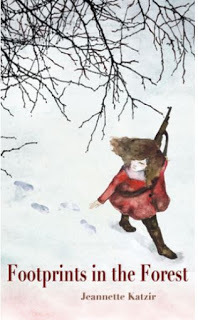
Like a number of popular books, Footprints in the Forest is a dual time frame novel. It alternates WWII Poland with New York in the late 1940's. I found the WWII chapters more interesting and compelling. The American portions of the book were lighter in tone which some readers may consider a relief from reading about characters who are continually running for their lives.
In some ways, Chana the protagonist, reminded me of Jacqueline, the female French Resistance fighter in Marge Piercy's Gone To Soldiers which I reviewed here. They were both changed by their experiences, but I thought that Jacqueline became stronger and Chana emerged from WWII more fragile. I understood why Chana was so traumatized, but I preferred her fellow female partisan, Leeza who was more of a survivor type. It was fortunate that Chana had Leeza's friendship because she certainly depended on Leeza for emotional support. Chana also couldn't have survived without the steadiness of her brother, Isaac, who was always there for her.
Chana's developing art career in the U.S. was the aspect of the American narrative that I found most appealing. I enjoyed reading about her creative process, how she learned to paint in oils and how her relationship with the gallery owner eventually evolved into a friendship. On the other hand, I found Chana's stereotypical fantasy of the perfect wedding rather annoying. It was also a very American idea of weddings, and it didn't seem likely to me that a Polish Jew from a religious background would have become so Americanized in her expectations that quickly.
There were a few names that I thought were inappropriate like the Russian partisan whose first name was Barry and the Polish Jew who had a brother named Thomas. There was also a Hebrew error. Alov ha'shalom (may he rest in peace) is correct if the dead individual is male. If the dead individual is female, it should be aleha ha'shalom. Yet these are minor problems.
The background otherwise seemed authentic and well-developed. I felt that I was there in the forest with Chana trying to survive Nazis, severe weather and other dangers. This was a gripping portrayal of the life story of Katzir's mother.

Like a number of popular books, Footprints in the Forest is a dual time frame novel. It alternates WWII Poland with New York in the late 1940's. I found the WWII chapters more interesting and compelling. The American portions of the book were lighter in tone which some readers may consider a relief from reading about characters who are continually running for their lives.
In some ways, Chana the protagonist, reminded me of Jacqueline, the female French Resistance fighter in Marge Piercy's Gone To Soldiers which I reviewed here. They were both changed by their experiences, but I thought that Jacqueline became stronger and Chana emerged from WWII more fragile. I understood why Chana was so traumatized, but I preferred her fellow female partisan, Leeza who was more of a survivor type. It was fortunate that Chana had Leeza's friendship because she certainly depended on Leeza for emotional support. Chana also couldn't have survived without the steadiness of her brother, Isaac, who was always there for her.
Chana's developing art career in the U.S. was the aspect of the American narrative that I found most appealing. I enjoyed reading about her creative process, how she learned to paint in oils and how her relationship with the gallery owner eventually evolved into a friendship. On the other hand, I found Chana's stereotypical fantasy of the perfect wedding rather annoying. It was also a very American idea of weddings, and it didn't seem likely to me that a Polish Jew from a religious background would have become so Americanized in her expectations that quickly.
There were a few names that I thought were inappropriate like the Russian partisan whose first name was Barry and the Polish Jew who had a brother named Thomas. There was also a Hebrew error. Alov ha'shalom (may he rest in peace) is correct if the dead individual is male. If the dead individual is female, it should be aleha ha'shalom. Yet these are minor problems.
The background otherwise seemed authentic and well-developed. I felt that I was there in the forest with Chana trying to survive Nazis, severe weather and other dangers. This was a gripping portrayal of the life story of Katzir's mother.
Published on December 23, 2016 19:05
November 20, 2016
The Other Einstein-- Blog Tour and Giveaway
I received my copy of The Other Einstein by Marie Benedict from Net Galley some time ago while I was still working on my master's degree. Then I had to catch up on review commitments I'd made to authors and publishers. While in the midst of this process, I was invited to join The Other Einstein blog tour and tour wide giveaway. So now I'm wading into the really interesting controversy surrounding Einstein's first wife with this honest review.
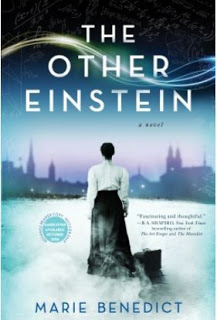
Mileva Marić wanted to be a physicist when she was young. She was admitted to Zurich Polytechnic to study physics and mathematics with two strikes against her. The first was being a woman in a very male world. The second was being from Serbia which was considered a cultural backwater in Western Europe. I am citing facts at this point. There is a Wikipedia article dealing with Mileva . If you want to see how much about that article is in dispute look at the Talk section. There has been an editing war over this article. Both sides are absolutely certain about things that can't be known with absolute certainty.
This is what is not in dispute. Mileva met Einstein at Zurich Polytechnic where they were both students. They fell in love and she became pregnant. She had to drop out of school without finishing her degree, and they married. This is a sad story, and it has happened to a great many women. She never realized her dreams.
Historical fiction deals with what isn't part of the historical record. How did Einstein treat his wife when they weren't in public? Did Mileva contribute to Einstein's scientific work? These are questions that are open to speculation. No one can really claim to know the truth about them. Marie Benedict has as much right to an opinion as anyone else. She did the research and came to a conclusion that isn't at all palatable for supporters of Albert Einstein. Some sources say that he was verbally abusive toward Mileva in public, and that he called her ugly. Below is a public domain photo of Mileva that I found on Wikipedia. You be the judge.
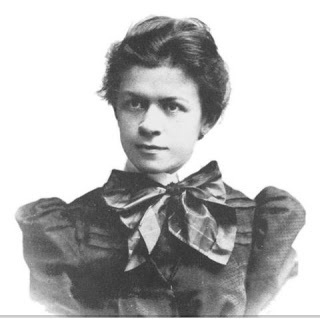
It's said that Einstein burned out early because he never did any great work after he developed the theory of relativity and published it in 1905. Could his estrangement from Mileva be the reason why he no longer produced any other brilliant new theory? I don't know, but I'm willing to entertain the possibility.
Benedict's version of Mileva isn't a feminist icon. She made choices that I wouldn't have made in her circumstances. In fact, Marie Curie appears briefly in this novel. This great woman scientist tells Mileva that the only differences between them are the choices they made and the men they married. Madame Curie's husband dedicated his life to supporting her career. Benedict portrays Einstein as having deliberately undermined Mileva. I wanted her Mileva to be stronger.
A number of reviewers believe that Benedict's Mileva was a product of her historical environment and the dominant culture. The truth is that the 21st century isn't that much kinder to women. Any woman who becomes involved in a relationship with a man in the same field may still face the same problems. She may be ignored and her work may go uncredited. Then like Benedict's Mileva, she may be shoved out of her field while her significant other or husband is lionized. This is why this book has significance even if the real Mileva wasn't a scientific genius. It could be a wake up call to young woman readers who may be on the verge of making a terrible mistake that could destroy their future careers.
For me, the value of The Other Einstein is learning of Mileva Marić's existence. Whatever the truth might be about her, she deserves to be known rather than buried in obscurity. Now anyone who has read this book can examine what is known about her, and make their own decisions about what they believe concerning the issues that Benedict has raised.
THE OTHER EINSTEIN TOUR WIDE
GIVEAWAY
This a Rafflecopter giveaway available to all blogs participating in the tour.
a Rafflecopter giveaway
Good luck, readers.

Mileva Marić wanted to be a physicist when she was young. She was admitted to Zurich Polytechnic to study physics and mathematics with two strikes against her. The first was being a woman in a very male world. The second was being from Serbia which was considered a cultural backwater in Western Europe. I am citing facts at this point. There is a Wikipedia article dealing with Mileva . If you want to see how much about that article is in dispute look at the Talk section. There has been an editing war over this article. Both sides are absolutely certain about things that can't be known with absolute certainty.
This is what is not in dispute. Mileva met Einstein at Zurich Polytechnic where they were both students. They fell in love and she became pregnant. She had to drop out of school without finishing her degree, and they married. This is a sad story, and it has happened to a great many women. She never realized her dreams.
Historical fiction deals with what isn't part of the historical record. How did Einstein treat his wife when they weren't in public? Did Mileva contribute to Einstein's scientific work? These are questions that are open to speculation. No one can really claim to know the truth about them. Marie Benedict has as much right to an opinion as anyone else. She did the research and came to a conclusion that isn't at all palatable for supporters of Albert Einstein. Some sources say that he was verbally abusive toward Mileva in public, and that he called her ugly. Below is a public domain photo of Mileva that I found on Wikipedia. You be the judge.

It's said that Einstein burned out early because he never did any great work after he developed the theory of relativity and published it in 1905. Could his estrangement from Mileva be the reason why he no longer produced any other brilliant new theory? I don't know, but I'm willing to entertain the possibility.
Benedict's version of Mileva isn't a feminist icon. She made choices that I wouldn't have made in her circumstances. In fact, Marie Curie appears briefly in this novel. This great woman scientist tells Mileva that the only differences between them are the choices they made and the men they married. Madame Curie's husband dedicated his life to supporting her career. Benedict portrays Einstein as having deliberately undermined Mileva. I wanted her Mileva to be stronger.
A number of reviewers believe that Benedict's Mileva was a product of her historical environment and the dominant culture. The truth is that the 21st century isn't that much kinder to women. Any woman who becomes involved in a relationship with a man in the same field may still face the same problems. She may be ignored and her work may go uncredited. Then like Benedict's Mileva, she may be shoved out of her field while her significant other or husband is lionized. This is why this book has significance even if the real Mileva wasn't a scientific genius. It could be a wake up call to young woman readers who may be on the verge of making a terrible mistake that could destroy their future careers.
For me, the value of The Other Einstein is learning of Mileva Marić's existence. Whatever the truth might be about her, she deserves to be known rather than buried in obscurity. Now anyone who has read this book can examine what is known about her, and make their own decisions about what they believe concerning the issues that Benedict has raised.
THE OTHER EINSTEIN TOUR WIDE
GIVEAWAY
This a Rafflecopter giveaway available to all blogs participating in the tour.
a Rafflecopter giveaway
Good luck, readers.
Published on November 20, 2016 16:49
November 15, 2016
Silver Wings for Vicki: Nancy Drew Hits the Skies
 I was recently browsing in an antique store...my favorite pastime, yes, even more than reading, and I came across this old hardback book. And when I say old, I mean the copyright is 1947.
I was recently browsing in an antique store...my favorite pastime, yes, even more than reading, and I came across this old hardback book. And when I say old, I mean the copyright is 1947.My curiosity was immediate and strong. I knew it had something to do with aviation by the little picture on the front. (My copy is just the hardback with the little woman's face.) I thought it was a pilot, but there was no blurb. I just took a chance.
It turns out it's the first in a series about a flight attendant in a time when aviation was really becoming a passenger thing. When planes were all aluminum and rivets and shown like sterling silver, when the DC3 was considered top of the line. And while this young lady, Vickie Barr, plays air hostess, she solves mysteries.
Now, the last set of old books I bought with a 1940s copyright, about a woman pilot, were ridiculous and unbelievable. But I liked this. It was just a fun, utterly charming, enjoyable read. The heroine could be called one of those Mary Sues or whatever they are, but yet..not quite. Despite her perfect family life and the way things fall into place for her, she has drive, works for what she has, appreciates many, and is very humble. Heart-in-the-right-place and doing-it-for-the-right reasons kind of humble.
She also learns quite a bit about flying, through the pilots, lectures, school.
If you were fond of Nancy Drew and ever desired to be a flight attendant, give this series a go. In this, the first installment, Vickie applies for the job (This was very interesting to me!! You'd not get away with these hiring practices or requirements now! LOL) and then goes to school. Once through school, she discovers a mysteries smuggling operation is using her flight for transportation...
There's also mild, fun romance and delightful bits of humor. I understand the first four books in the series were by Helen Wells, who also penned a nursing series. The author herself is fascinating. According to her bio on Goodreads, she was a social worker turned full-time young adult writer... In 1934 Wells graduated from New York University [where she'd been the first female editor of the literary quarterly], with a major in philosophy and a minor in sociology and psychology.
Best piece of fiction ever? No. A door stop? No. But it is the first book that has managed to hold my attention from beginning to end in quite a while and I thought it warranted sharing, this old gem.

Published on November 15, 2016 18:21
October 23, 2016
Miss Jacobson's Journey by Carola Dunn--A Jewish Regency Romance
Miss Jacobson's Journey by Carola Dunn was published in 1992, but I discovered it relatively recently when author Mirta Trupp started a thread for it on the Goodreads group Jewish Period Drama.
This is a Regency romance. It's unusual for me to review any romance, but I would never have thought that I would ever review a book in this particular romance sub-genre. Many romances contain characters that I find offensive, but there is nothing inherent in the structure of romances in general that requires women to be doormats or men to be arrogant. Regencies are inherently problematic for me. I hate the Regency milieu. I think that Regency romances glorify aristocrats and their lifestyle which I consider repellent. So the only type of Regency romance that I'd even be willing to read, would have to deal with characters who are outsiders that live in an entirely different context. This means that the only thing that would define the book as a Regency romance is that it takes place during the same early 19th century period. Miss Jacobson's Journey deals with Jews whose values are different from early 19th century English aristocrats. This is one of the reasons why this book is a breath of fresh air.
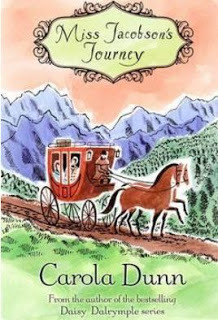
Miriam Jacobson herself is the best thing about the novel. Her family doesn't expect her to marry a man with a title of nobility. Instead they want her to accept an arranged marriage with a Talmudic scholar. Clever Miriam claims her right to an independent life by making a decision to which her family couldn't object. She would accompany her medical researcher uncle on his travels in order to take care of him. She hoped to have adventures in the process of assisting her uncle. I liked the fact that a Regency romance was presenting us with a heroine whose goal was to have adventures. She turned out to have opportunities to learn about medicine as her uncle practiced it, develop a working knowledge of a number of languages and a network of connections with her uncle's patients throughout Europe.
There is an English aristocrat in the novel who evolves as a character, and becomes somewhat more sympathetic over the course of the narrative. Carola Dunn portrays Lord Felix Roworth as a foil for the Jewish hero, Isaac Cohen. They are contrasting rivals for Miriam's affections. Isaac is as non-traditional in the context of a Regency as Miriam. I definitely preferred him over Lord Felix.
In addition to the romance drama, Miriam becomes involved in a secret mission against Napoleon that is facilitated by the influential Rothschild family who are real historical personages. I had read non-fiction dealing with 20th century Rothschilds, but I knew very little about earlier generations of Rothschilds. In Miss Jacobson's Journey, we learn about the role of the Rothschilds in the Napoleonic Wars, and something about their previous history. We also learn about the status of Jews during this period.
This is a very original and well-developed Regency romance. I loved the intelligence and adaptability of both the hero and heroine. I was impressed with Carola Dunn's authenticity in her depiction of the period and Jewish family life. It's definitely one of the best romances I've ever read.
This is a Regency romance. It's unusual for me to review any romance, but I would never have thought that I would ever review a book in this particular romance sub-genre. Many romances contain characters that I find offensive, but there is nothing inherent in the structure of romances in general that requires women to be doormats or men to be arrogant. Regencies are inherently problematic for me. I hate the Regency milieu. I think that Regency romances glorify aristocrats and their lifestyle which I consider repellent. So the only type of Regency romance that I'd even be willing to read, would have to deal with characters who are outsiders that live in an entirely different context. This means that the only thing that would define the book as a Regency romance is that it takes place during the same early 19th century period. Miss Jacobson's Journey deals with Jews whose values are different from early 19th century English aristocrats. This is one of the reasons why this book is a breath of fresh air.

Miriam Jacobson herself is the best thing about the novel. Her family doesn't expect her to marry a man with a title of nobility. Instead they want her to accept an arranged marriage with a Talmudic scholar. Clever Miriam claims her right to an independent life by making a decision to which her family couldn't object. She would accompany her medical researcher uncle on his travels in order to take care of him. She hoped to have adventures in the process of assisting her uncle. I liked the fact that a Regency romance was presenting us with a heroine whose goal was to have adventures. She turned out to have opportunities to learn about medicine as her uncle practiced it, develop a working knowledge of a number of languages and a network of connections with her uncle's patients throughout Europe.
There is an English aristocrat in the novel who evolves as a character, and becomes somewhat more sympathetic over the course of the narrative. Carola Dunn portrays Lord Felix Roworth as a foil for the Jewish hero, Isaac Cohen. They are contrasting rivals for Miriam's affections. Isaac is as non-traditional in the context of a Regency as Miriam. I definitely preferred him over Lord Felix.
In addition to the romance drama, Miriam becomes involved in a secret mission against Napoleon that is facilitated by the influential Rothschild family who are real historical personages. I had read non-fiction dealing with 20th century Rothschilds, but I knew very little about earlier generations of Rothschilds. In Miss Jacobson's Journey, we learn about the role of the Rothschilds in the Napoleonic Wars, and something about their previous history. We also learn about the status of Jews during this period.
This is a very original and well-developed Regency romance. I loved the intelligence and adaptability of both the hero and heroine. I was impressed with Carola Dunn's authenticity in her depiction of the period and Jewish family life. It's definitely one of the best romances I've ever read.
Published on October 23, 2016 16:50



